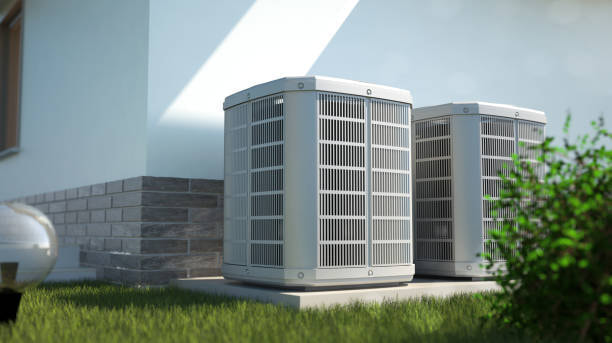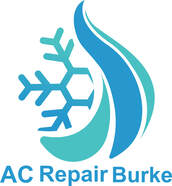|
The traditional tank-type unit remains the most widely used of the numerous varieties of water heaters on the market today. About half of these hot water storage units are electric, and the other half are gas-fired. Electric water heaters are the simplest to install, but not everyone is skilled at fixing them when they go down, as any plumber will tell you. Now we discuss about how water heater thermostat works? Approximately 1.5 million water heaters are replaced annually in America due to subpar performance. How many of these devices could be fixed so that they have a longer useful life? This page will list the major parts of an electric water heater, explain how they operate together to heat a house, and offer tips on how to use an electric water heater thermostat more effectively. Parts Of Water HeaterInside a water heater, the element is the component that transforms power into heat. Essentially, it's a resistor for electricity. The element heats up dramatically when electricity passes through it. The element delivers heat to the water until it reaches a certain temperature (usually 120 degrees) since it is submerged in the water. Elements are scaled based on wattage and available in a variety of forms to enhance their longevity and effectiveness. Although 3500 and 5500 watt variants are also available, 4500 watts is the most popular size. These sizes are listed on the rating plate of each water heater; they are not interchangeable. How Electrical Water Heater Thermostats Works?The majority of water heaters have an upper thermostat as their primary control element. It is in charge of both the higher and lower parts. In essence, a thermostat is a temperature-activated switch. The thermostat will activate one of the elements in response to this "call for heat" when it detects a drop in the water's temperature below its predetermined level. Since the thermostat never makes direct contact with the water, its method of detecting the water's temperature is unique. The temperature of the outer layer of the tank is sensed by the thermostat located at its back. It is firmly pressed up against it and secured with a clip. Through conduction through the tank's shell, this metal-to-metal contact transmits heat from the water to the thermostat. With the exception of the two locations where the thermostats are installed, the whole tank is insulated. The majority of electric water heaters larger than 20 gallons come equipped with two thermostats that monitor the water's temperature at both the top and bottom of the tank. Being in charge, the upper thermostat always gives the lower thermostat instructions. Working Of Water Heater Thermostat
Pressure Relief, Grounding And Limit ControlsA few safety features are built into every water heater to prevent hot water burns, electrocution, and tank explosions. Although these pressure valves are not to be taken lightly, most plumbers are resilient and do not quickly give in to intimidation. A high-temperature limit mechanism built into the upper electric water heater thermostat ensures that both components lose power in the event that the temperature rises above 150 degrees. This temperature of water will quickly scorch your skin. Similar to other electrical appliances, water heaters also have an equipment ground lug located inside the wiring compartment located at the top of the tank. In the event that the heater's jacket electrifies, this ground lug offers a low resistance channel for current to travel. Arguably, the most crucial safety feature in any pressurized heating system is the relief valve. The pressure relief valve will stop the heater from really inflicting any damage in the event that the thermostat malfunctions and the high-temperature limit doesn't turn it off. It will open to release pressure in a controlled, non-explosive way if it detects a pressure greater than 150 psi or a temperature higher than 210 degrees, which is around the boiling point of water. Routinely Maintenance Of Your Water HeaterIn order to maintain the heater operating safely and without issues, all of these safety devices should be routinely inspected. It is usual practice to diagnose and replace a failed bottom element, but in order to keep it from happening again, the sediment should be flushed out as much as possible. Frequent sediment cleansing will keep the heater running at peak efficiency and may have avoided the repair entirely. Installing a sediment filter is one suggestion a plumber might offer if there is sand at the unit's bottom. It would also be a fantastic idea to install a water softener if minerals appear to be piling up quickly. Before the silt and minerals reach the tank, these steps will extract them from the water. A leaky relief valve is another typical issue that might be misdiagnosed as a tank leak. Although there may be other reasons for this, a valve malfunction is typically the root problem. The relief valve only needs to be used to stop the drip in around half of the cases. You just need to replace the valve if that doesn't work and you've made sure there's no overpressure or high temperature issue. Repair Your Water Heater Before ReplacementAn electric water heater's lifespan can be greatly increased with a little preventative care, and repairs can result in larger profit margins for the plumbers performing them. It is also possible to prevent large amounts of non-recyclable waste from ending up in landfills and scrapyards. Go to AC Repair Burke to find out more about how water heaters work as well as troubleshoot and repair them. Improved Your Water Heater EfficiencySediment is the greatest thief stealing the efficiency from a water heater. Hard water contains minerals like magnesium and calcium that are used to build sediment. Every tank-type water heater experiences a build-up of undissolved minerals and suspended sand at the bottom, which lowers the water heater's capacity to hold hot water.
Different effects are seen by gas-fired and electric heaters from this crusty coating of components. Sediment accumulates in the electric units until the bottom element is buried. It causes the element to overheat by dislodging the cool water that usually surrounds it.
0 Comments
Leave a Reply. |
AuthorWrite something about yourself. No need to be fancy, just an overview. Archives
June 2024
Categories |
- Home
-
Services
- Residential HVAC >
-
Commercial HVAC
>
- Professional Commercial AC Services
- Professional Apartment AC Services
- Commercial HVAC Installations
- Commercial HVAC Services
- Commercial Plumbing Services
- Commercial Water Heater Services
- Commercial Refrigeration Services
- Commercial AC and Furnace Services
- Commercial AC Pump Services
- Commercial Rooftop Unit Services
- Commercial Duct Cleaning Services
- Commercial Heating Preventive Maintenance
- About Us
- Near Me
- FAQ'S
- Contact Us
- Free Estimate
- Resources
- Blog
- Home
-
Services
- Residential HVAC >
-
Commercial HVAC
>
- Professional Commercial AC Services
- Professional Apartment AC Services
- Commercial HVAC Installations
- Commercial HVAC Services
- Commercial Plumbing Services
- Commercial Water Heater Services
- Commercial Refrigeration Services
- Commercial AC and Furnace Services
- Commercial AC Pump Services
- Commercial Rooftop Unit Services
- Commercial Duct Cleaning Services
- Commercial Heating Preventive Maintenance
- About Us
- Near Me
- FAQ'S
- Contact Us
- Free Estimate
- Resources
- Blog
Local Service AreasHours of Operation
Monday 9:00 AM - 5:00 PM
Tuesday 9:00 AM - 5:00 PM Wednesday 9:00 AM - 5:00 PM Thursday 9:00 AM - 5:00 PM Friday 9:00 AM - 5:00 PM Saturday 9:00 AM - 5:00 PM |
Navigation |
Services |
Contact us |
Terms of service | Privacy Policy | Sitemap


 RSS Feed
RSS Feed
